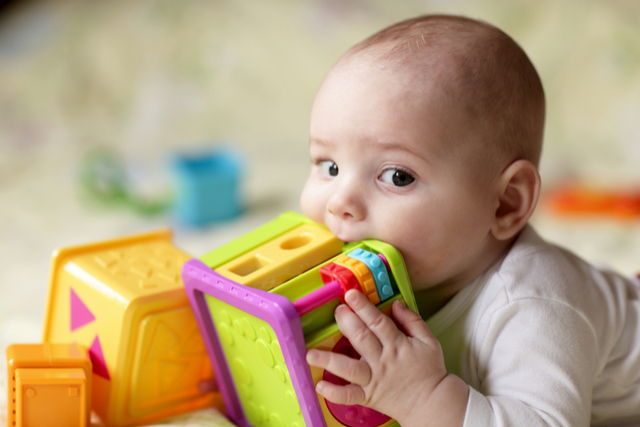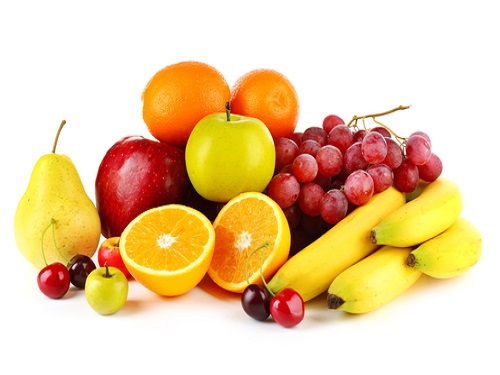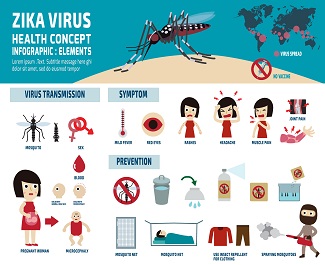Every child likes toys. Toys bring fun to children and help with their IQ development, but it may also threaten their safety. According to a survey by the CASE in 2011, 46% of the toys surveyed is found to contain toxic chemicals.
Toys that meet the safety requirements can possess health threats and hazards to your child as well. In addition, parents should take extra caution against toys that contain small parts, magnets or sharp points as they could lead to choking, blood poisoning, serious injuries or even death. It is also important for parents to not only pay attention to safety and age labeling on the packaging but also observe their children's developmental age and determine whether the toys are safe for them.
This article provides general guidelines on baby toy safety which parents can follow to safeguard their child against unnecessary risks that are caused by using dangerous toys.
General Guidelines On Toy Safety For Babies And Young Children
All children love toys and toys are important for the children's intellectual development. However, if the toys are not chosen correctly or used in the right way, they may pose danger to the children.
1. Choose age-appropriate toys
Parents should always choose toys that are appropriate to their child's developmental age. They should adhere to age and safety-related warnings because the toys that are designed for older children may contain small parts or have other hazards that will hurt their child. Toys designed for older children should be kept out of reach from the younger child.
According to a survey done by Singapore Medical Journal in 2013, about half of the parents surveyed have bought toys that were not meant for a child's age group because they believed that the toy would benefit the child educationally or that they were developmentally ready to play safely with the toy. However, this is extremely dangerous as serious accidents such as choking, poisoning and even death could be resulted from doing so. This is because age recommendation labels are not based on the level of difficulty of a toy, but on the fact that the toy may contain small parts or present dangers to the children.
2. Read the safety labels
Parents should always read the safety label that comes with the toys and follow the instruction strictly before usage. Safety-related warnings on toys should not be dismissed. For example, some toys may be labeled "WARNING: CHOKING HAZARD – This toy is a small ball. Not for children under 3 years." Such warnings should not be taken lightly and parents should not be complacent about how such incidents will not happen.
3. Avoid toys with small parts:
Do not buy toys that have small detachable or movable parts. It may cause choking or serious danger if your child puts it into his mouth. Young children are vulnerable to airway obstruction because anatomically, they have small tracheas and easily become victims of upper airway obstruction. They also lack the tussive force needed to expel a foreign boy.
Looking from a behavioural perspective, they also commonly put objects in their mouths as they explore the environment.
While there are stringent safety regulations for toys with small parts and appropriate age labeling, the labeling only applies to typically developing children. If your child still likes to put things into their mouth, have chronic conditions such as neuromuscular diseases that comes with a weak cough, gag and swallow reflexes, it is important to choose toys according to his or her developmental age and not just his or her chronological age.
You should observe the size of the small parts by yourself rather than merely following the age-labelling. Those with slower growth are also at risk of choking accidents with such toys.
- Avoid toys with small round objects
Toys with small parts that are round, such as marbles or balls are also more dangerous for a child as they can slide deep into a child's airway and create a tight-fitting obstruction that is difficult to extricate, hence leading to higher risks of choking deaths. Hence, parents should be extra cautious when buying such toys.
4. Avoid toys with balloons
Balloons are also one of the leading causes of choking death in children below the age of 6 years old. This because they can mold into the shape of the child's airway. Hence, balloons should be stored out of reach of young children. They should not inflate the balloons themselves and once the balloons are deflated, they should be discarded after use.
5. Avoid toys with small magnets
Toys with magnets are also extremely dangerous, even when it is not loose or small. This is because when multiple magnets are swallowed, they can trap bowel and cause necrsis (death of most or all cells in an organ or tissue) leading to perforation and fistula formation. They can also stick to one another in the child's intestines causing serious injury such as damaged intestines, blood poisioning or death. Hence, parents should not give such magnet sets with small magnets to children who are below the age of 9 years old.
If they are not loose and hazardous, they are deemed to be toys for children above 9 years old with a prominent warning label. However, some magnet-based toys are for children at least 14 years of age and hence, does not have a label. Hence, even without obvious signs of warning, parents should not ignore the age labelling and buy for their young child just because they feel that their child is smart enough to use them properly and to train their puzzle-solving and thinking skills.
Magnet-based toys can be appropriate for young children, but magnet sets that contain many small pieces needs more advanced fine motor and attentional skills and hence, should only be given to children who are developmentally appropriate. Those that are suitable for young children should also be of low magnetic attractive force.
6. Avoid toys that make loud noises
Do not choose toys that make loud noises as it may damage your child's hearing. Toy sirens and squeaky toys can be as loud as 85 dB, which is as loud as a lawnmower. Even adults who are near them would have to wear ear protection.
Many children like to hold the toy close to their ear, making the sound even more dangerous as a 90dB sound can grow to be as loud as 120 dB. This is as loud as a plane taking off. This is not only painful for your child and can cause hearing loss.
Thus, parents should always check and test out the volume of the toy first before buying it. If there are already such toys at home, you can remove the batteries or place a duct tape over the speaker to make it quieter.
7. Check for toxic elements
Parents should always read the labels to ensure that the materials that have gone into manufacturing the toy are not toxic.
- PVC, Phthalates and BPA
Toxic substances such as PVC in plastics can contain lead, phthalates and volatile organic compounds that are known to cause cancer and disrupt your hormones. Another toxic plastic chemical of concern is Bisphenol A, or BPA. Bisphenol A is a known endocrine disruptor that can be found in toys, plastic dishware and water bottles. Sometimes, even though BPA is not present, it may have been replaced with BPS, which is equally toxic.
- Brominated fire retardants
A study by the Chinese Academy of Sciences published April 29, 2009 in Environmental Science and Technology finds that there is a widespread use of brominated fire retardant chemicals in Chinese-made children's toys.
Brominated fire retardants are dangerous for children because laboratory studies have shown that they disrupt hormone systems and affect the brain and behavior. Parents should be extra cautious and buy toys that do not contain polybrominated diethyl ethers (PBDEs), which is a brominated fire retardant found in all the hard plastic, foam, stuffed toys and soft rubber toys tested in the study. Polybrominated biphenyls (PBBs) and brominated-ethanes (DBDPE & BTBPE) are also other forms of brominated fire retardants.
- Recommendations
It is better for parents to buy toys which are manufactured by reputable toy companies, have proven safety track record and uses non-toxic finishes and materials. Parents can also do their research beforehand and invest in good quality toys that are made by brands who explain how they get their materials from.
For example, when buying toys made from plastic, ensure that they have indicated on the packaging that the toy does not contain any of the toxic substances. It is better to buy toys made from food-grade plastic, such as ABS plastic or other safe plastics which are free of phthalates, BPA, lead and PVC.
When in doubt, you can also avoid the plastic altogether and choose wood or stainless steel alternatives, which may also be more durable.
For example, Plan Toys is a reputable wooden toy company which is known for quality wooden toys. They are based in Thailand and use the wood from unfertilized rubber trees. Organic color pigment and water-based dyes are used to color the toys. Beside Plan Toys, there are many other brands which make natural and durable wooden toys which parents can find. Wooden toys which are free from dye or coated with petroleum-based lacquer are safe choices.
8. Research and check for product recalls
Before purchasing a new toy for your child, do a search online first and make sure that what you are planning to buy has not been recalled. In Singapore, the Consumer Goods Safety Requirements (CGSR), a regulation set by the Ministry of Trade and Industry and enforced by SPRING Singapore, protects consumers from unsafe toys by removing or banning them from the market. Suppliers can face a fine of up to S$10,000 should they fail to comply.
Hence, be sure to visit the following website by Spring Singapore: Tested for Your Safety: Product Testing Results to check the public record of toys that have been deemed as unsafe and see if any toys you have bought or are intending to buy has recently been recalled or banned.
9. Avoid toys with breakable parts
Do not choose toys that are made from breakable parts such as glass and magnet. They may break into smaller parts if your child throw it around and it can cause choking if your child put these smaller parts into his or her mouth.
10. Avoid toys with paint
Avoid toys that have paint on them, especially lead-based paint, which is very toxic. Children tend to put toys into their mouth and the chemical of the paint may pose danger to your child's health and development, or even cause death.
A high amount of lead concentration in the paint, more than 0.009%, is especially harmful and can affect your child's nervous system. Children may bite the toy continuously as it has a sweet taste. However, since 1972, the control of the amount of lead paint was put in place. Nevertheless, parents should be careful of old toys or retro toys made prior to 1972.
11. Avoid heavy toys
Avoid buying toys that are heavy. Once it falls, it may hurt your child.
12. Buy durable toys
Check the toys regularly for any breakage, loose nails and other potential hazards. Parents are also encouraged to buy well-made and durable toys that can withstand rough play. Damaged or broken toys should be repaired or discarded.
13. The cord of the toy should not exceed 12 inches
If the toy comes with lines and cord, make sure its length does not exceed 12 inches as a long line or cord may strangle the child.
14. Be careful about the batteries
Toys which are battery-operated should have battery cases that are tightly secured to prevent a young child from opening it and chewing on the batteries. Button batteries are extremely toxic and pose very serious risks. Swallowing them can lead to internal bleeding and chemical burns.
To prevent leaking batteries, take out the batteries in toys if they are not played with often. The liquids that are leaked from batteries are poisonous and tissue-damaging.
15. Avoid toys with sharp points and edges
Toys with sharp points or edges can hurt your child by accident if he or she is playing with it roughly. When your child steps or falls on it, the sharp points may hurt any part of the body, including points such as the head or face.
16. Demonstrate proper play
Parents or other adults should be involved in play when young children are playing with their toys. Adults should demonstrate proper play to the children and monitor appropriate use of the toy from time to time.
17. Be cautious with ride-on toys
Always ensure that the young children are playing with the ride-on toys in safe areas. When used outdoors, pay extra attention to the children when they are playing with them near the stairs, roads or swimming pools as it is easy for them to go out of control when excited. Proper discipline and supervision are needed when playing outdoors.
18. Prevent them from playing with non-toy objects
Children may use non-toy objects at home as toys. This includes household items and decorations. Hence, it is important to discipline them and teach them not to play with non-toys and put them in the mouth.
19. Clean the toys regularly
Bacteria can accumulate easily on the surface on the toys, especially plush toys. According to a study, a plush toy is found to have over 20000 germs on it. Hence, parents should carry out regular cleaning and disinfection of their child's toys. For plush toys or toys made up of cotton, you can wash, disinfect and dry it under the sunlight. Using a mesh bag prevents snagging in the washing machine. Always wash the plush toys on the delicate mod on your washing machine to prevent damage.
If the toys are made of wood, you can wash it with warm water, one or two drops of vinegar, a mild dish soap and dry it under the sunlight. For plastic and rubber toys, you can wash it with water, some soap and dry it.



